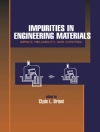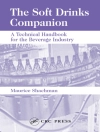Following the success of the first edition, this fully updated and revised book continues to provide an interdisciplinary introduction to sustainability issues in the context of chemistry and chemical technology. Its prime objective is to equip young chemists (and others) to more fully to appreciate, defend and promote the role that chemistry and its practitioners play in moving towards a society better able to control, manage and ameliorate its impact on the ecosphere. To do this, it is necessary to set the ideas, concepts, achievements and challenges of chemistry and its application in the context of its environmental impact, past, present and future, and of the changes needed to bring about a more sustainable yet equitable world.
Progress since 2010 is reflected by the inclusion of the latest research and thinking, selected and discussed to put the advances concisely in a much wider setting – historic, scientific, technological, intellectual and societal. The treatment also examines the complexities and additional challenges arising from public and media attitudes to science and technology and associated controversies and from the difficulties in reconciling environmental protection and global development.
While the book stresses the central importance of rigour in the collection and treatment of evidence and reason in decision-making, to ensure that it meets the needs of an extensive community of students, it is broad in scope, rather than deep. It is, therefore, appropriate for a wide audience, including all practising scientists and technologists.
İçerik tablosu
Scope of the Book;
Setting the Scene;
Sustainability and Sustainable Development;
Science and its Importance;
Chemistry of the Environment;
Waste, Energy and the Laws of Thermodynamics;
Measuring Reaction and Process Efficiency;
Chemistry: Necessary for Sustainable Technology, but not Sufficient;
Processing of Chemicals at Scale;
Catalysis;
Sustainable Energy, Fuel and Chemicals;
Biomass as a Source of Energy, Fuels and Chemicals;
The Chemist as Citizen;
Conclusions












